
At most batting cages and baseball fields in America, you will hear the same few phrases yelled by coaches and parents at their players. “Don’t drop your shoulder,” “Swing Level,” “Swing down,” “Squish the bug” are a few of these phrases. They are said with good intentions but are they really helping? I would argue that at best they are not helping and at worst they downright harmful to the players performance.
They are not helping for several reasons. One reason is that just giving verbal cues is not the most effective way to change an athletes movement habits. Just telling a hitter to change is usually not enough to change their flawed and ingrained movement patterns. Exercises/drills that constrain their movements and mandate the correct movements are much more effective. I will dive deeper into this topic in a future post. For now, I want to talk about the other big reason that these cues should stop being repeated.
The main reason is that they are describing movements that good hitters don’t actually do. The baseball swing is an extremely fast movement and very hard to see the intricacies with the naked eye. Because of this, a lot of myths about what is happening in the swing have developed over the years. Many of these cues describe what people thought good hitters had to do, but are not what good hitter actually do. Luckily nowadays, slow motion video can clear some of these things up.
“Don’t Drop Your Shoulder”
This one is based on the belief that if your shoulder goes down towards the ground during the swing, it will cause you to swing with a huge “uppercut” and only hit weak popups. The problem with this line of thinking, is that the back shoulder must go down in order to hit the ball well. Especially on the low pitch. You cannot hit the ball well with level or close to level shoulders. Here is a picture of Mike Trout almost at contact. You can see, his shoulders are close to vertical!

A similar position is shown by Aaron Judge in the below picture. In other posts, I have referred to Steve Englishbey’s concept that the swing is a tilted tornado. Hitters must tilt their bodies and rotate rapidly along that plane to hit the ball well. If you do this, your shoulders are going to look like the pictures of Trout and Judge. Trying to stop this from happening in the swing would do great harm to a hitters performance.
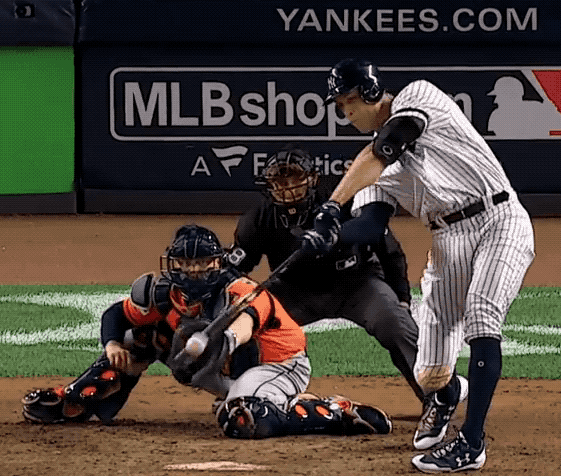
“Swing Level”
Many people believe that you must swing the bat level to the ground. If you swing with an “uppercut” you will mostly hit popups and flyballs. If you have a “chop down” swing, you will mostly hit ground balls. They believe you must swing “level”. That means the bat must be moving level to the ground at contact. This is another myth. In the below picture Alex Rodriguez demonstrates what he believes to be proper contact position. Notice the level bat.
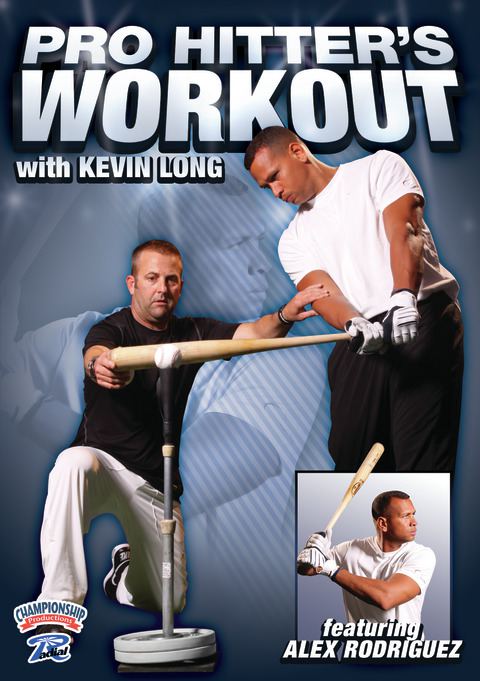
But let’s look at what A-Rod actually looks like at contact in games. Also, go back and look at the above pictures of Trout and Judge. They do not swing with a level bat.
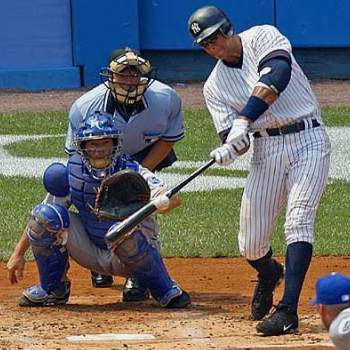
But those still pictures don’t show how the bat is moving at contact. Take a look at the below GIF’s of Kris Bryant and Bryce Harper. Their bats are moving on an upward angle at contact. Notice how the barrel of the bat goes toward the bottom of the frame, out of view briefly, and then back up towards contact with the ball.
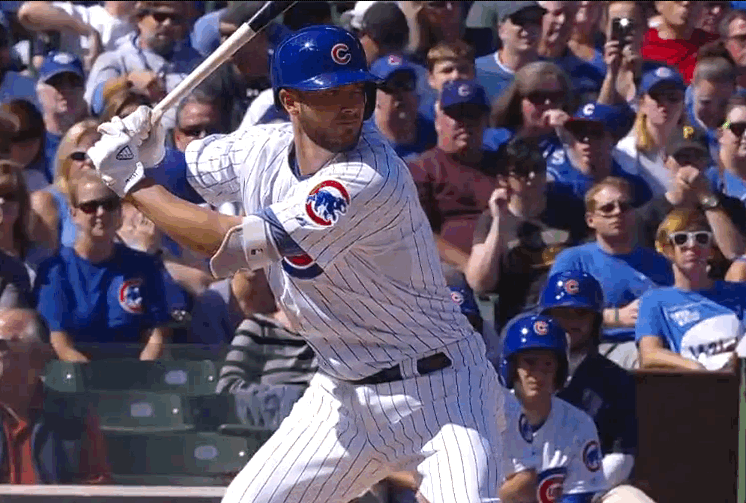

The Blast Motion bat sensor also debunked this “swing level” thought. With their sensor that attaches to a bat, they can measure the attack angle, which is the vertical angle the bat is moving at contact. 0 degrees would be level. They have measured that MLB players ideally swing between 10 and 20 degrees.
Players must have the barrel moving on an upward angle at contact. This is the only way to effectively and consistently hit line drives.
“Swing Down”
Some in the baseball community believe that the bat must be moving down at contact. They say things like “swing down to create backspin” or “take the bat, straight to the ball” . In my opinion these thoughts are even more harmful than the “swing level” thoughts. The previous segment does a pretty good job of disproving “swing down” but I also want to mention additional reasons why this cue is nonsense.
While backspin can help a ball have more carry and go farther, it is near impossible to effect the spin of the ball while swinging. Also even if swinging down were to create more backspin, it would result in lower exit velocity numbers, which are much more important in batted ball distance. This is because swinging down takes all the momentum you are creating by swinging the bat and channels it downward. It makes your hardest hits ground balls. You want your hardest hit balls to be up in the air for line drives, which lead to more extra base hits and home runs.
Some will say that swinging straight down to the ball is the quickest way the ball. They argue that the fastest way between two points is a straight line. That may be true but it’s not the reality of hitting. Like I said earlier,if you swing straight down to the ball you will only be able to hit hard ground balls. The swing is an arc like the GIF below shows. The swing plane is not in the shape of a “V” ,where the bat goes down in a straight line to contact and then straight up.
Even though it may not be a straight line, if the bat is connected to this arc, hitters are still able to get to the point of contact very quickly. You can see this on the Major League level every night when hitters are able to drive 95+ mph pitching. They do not need to swing on a straight line to the ball to be able to hit the high velocity pitching.
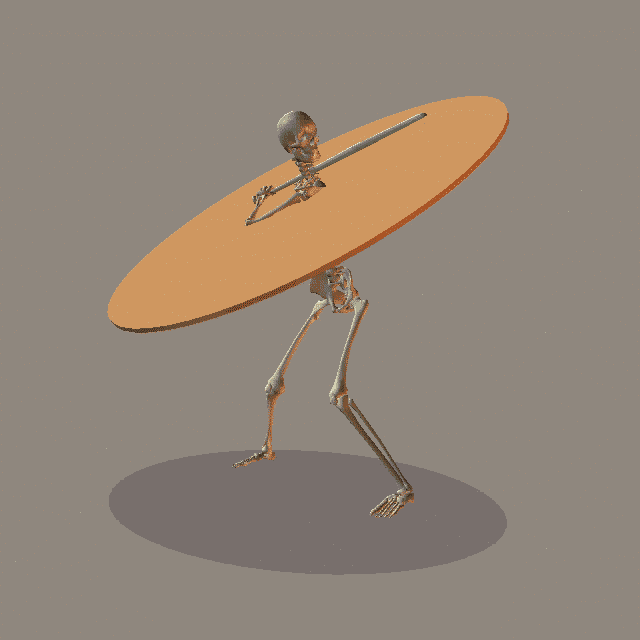
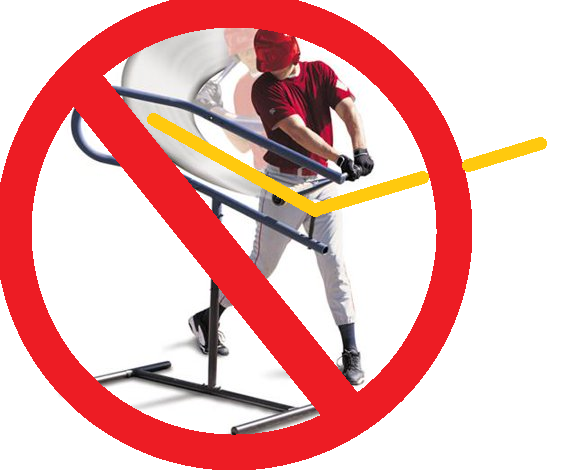
“Squish the Bug”
This cue refers to a hitters back foot. The hitters is told to internally rotate the back foot on the ball of the foot. This movement is similar to what you would do to “squash a bug” under your shoe. This movement is supposed to help “power” the rotation of the hips.
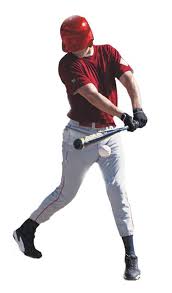
This is bad advice for several reasons. “Squashing the bug” can be done without actually moving the hips. Squashing the bug does not guarantee the hips move at all. Stand up and try it yourself. If you want the hips to rotate you should focus on the hips, don’t focus on what the back foot is doing.
Good hitters start the swing from the middle of the body outward. This is called proximal to distal sequencing. Proximal refers to body parts closer to the center of the body. Distal refers to body parts the farther from the center of the body. Good hitters turn the hips(proximal) to generate momentum that then is transferred to the shoulders and arms(distal). This is important because rotating the back foot and leg will not help rotate the hips properly. Distal segments of the body do not “power” the swing.
Also if you focus on keeping the ball of the foot on the ground during the swing it usually restricts hip movement. The hips need to rotate on an axis around the front hip joint. Think of a swinging gate. If you have the ball of the back foot planted on the ground, it can prevent this axis and shift the axis farther back toward the center of the body. Think of a revolving door.
More proof is that Major League hitters do not squash the bug. Most hitters are up on the toes of their back feet at contact. Some even have their back foot off of the ground. Take a look at the position of the back foot in some of the earlier photos in the post in this GIF of the Babe below.
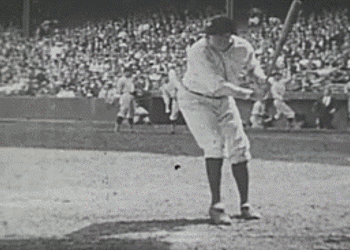
Summary
Just because something has been said for many years, it does not mean it is true and/or helpful. It is important that coaches and parents reevaluate what they telling their players about hitting and not just repeating what they have heard or been taught. A good way to fact check hitting information is to compare it to videos of elite hitters. If your coach is teaching using the above debunked coaching cues, contact me and we can work out a plan to train smarter!
This post is just the start! There are so many other cues I want to address I decided to break this post into two parts. Check back on the blog soon for part 2.
